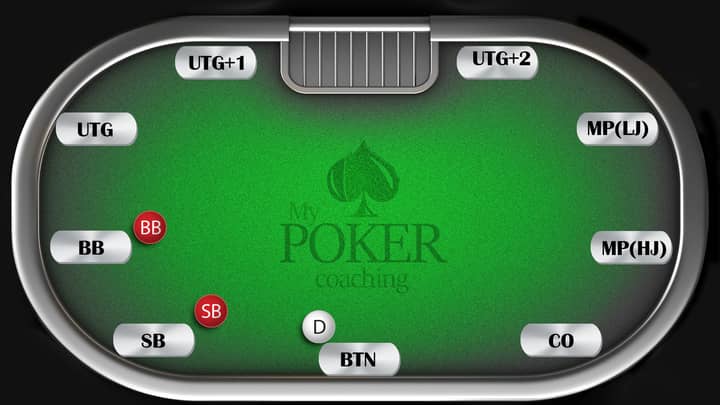Texas Holdem Seating Chart
In your poker tournament there will be times that players need to be moved from one table to another. Such times arrive when players bust out of the tournament and the tables don’t have the same number of players seating at them. If table A has two, or more players more than table B, a random player has to move from table A to table B. In Texas Hold’em there are four rough categorizations of the position at the table. Since the dealer is the most important position and as the button move clockwise to the left each round, the positions are named relative to the position of the dealer button. Let's now take a closer look at Texas Holdem strategy and the pattern that is essential for beginners to learn. The chart shows how many hands you are supposed to play depending on which position you sit in at the table. Example: You are sitting as player 6 to the left of the dealer button and you have a king of spades and a 7 of spades. The seating of a player at a table for 10 people means a lot because it makes a big difference who is playing in first (the worst) position or in last (the best) position. We are going to introduce a poker strategy and a scheme that can be of big help to the new fledgling player but first of all, we will take a look at the different positions.
- Texas Holdem Seating Chart Rows
- Texas Holdem Seating Chart Minute Maid Park
- Texas Holdem Seating Chart Oakland Coliseum
- Texas Holdem Seating Chart Golden Nugget
Seating Players
One of the challenges in starting your poker tournaments is seating your players. There are two ways to seat your players:
- Use the Tournament Director software. Tournament Director automatically assigns random seats to players.
- Assign random seats yourself. Follow the following steps for good results:
- Get the exact number of players – lets call it x.
- Get two decks. Take x number of cards out of one and the identical cards from the other deck
- Set one set at each seats on the tables one by one face up.
- Set the other set face down on a separate side table and shuffle it.
- Have each player pick up a random cards and seat at the corresponding table and seat.
- Collect all the cards and start the tournament.
For larger tournaments use the same procedure but instead of playing cards use paper cards and write table and seat numbers on them (two cards for each number). For example you can write 1-1, 1-2, …, 2-1, 2-2, … (table number-seat number)
Moving Players
When do you have to move a player?
In your poker tournament there will be times that players need to be moved from one table to another. Such times arrive when players bust out of the tournament and the tables don’t have the same number of players seating at them. If table A has two, or more players more than table B, a random player has to move from table A to table B.
It is fine for a table to have one player more than another table as you can’t do anything about that.
Texas Holdem Seating Chart Rows
How do you move a player?
Texas Holdem Seating Chart Minute Maid Park
If you are using the Tournament Director, it will automatically realize if a player from a certain needs to be moved or not, chooses a random player, and gives a warning to move the player.
Texas Holdem Seating Chart Oakland Coliseum
If you are running the tournament by yourself (without the software) you can do the following: If a player is busted out from a table (therefore making the table shorter than another), find out his position in relation to the dealer at his last hand. Then go to the larger table and move the player with the same position and move him to the smaller table. So if the busted player was sitting two to the right of dealer, find the player at the larger table who seats two to the right of the dealer and move him to the smaller table.
Texas Holdem Seating Chart Golden Nugget

You can also try high carding the larger table to move a player. But the first method is faster, creates less confusion, and is more fair; it is more fair because the moved player will have the same position in relation to the blinds and therefore will not pay his next blind earlier or later than he should.